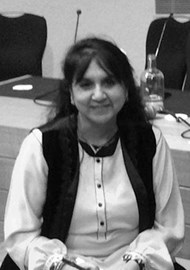The authors report a retrospective case series study, over an eight-year period between January 2008 to January 2016 evaluating the long-term outcomes of punch punctoplasty by Kelly punch as a primary treatment for punctal stenosis; 101 punch punctoplasties from 50 patients were evaluated. Anatomical success was defined by well-patent puncta on follow-up. Functional success was considered complete if tearing resolved completely postop and partial if residual tearing remained despite patent puncta and drainage system. There was a female predisposition, with 36 women and 14 men in the study. The mean age at presentation was 59 years (range three to 86 years). Bilateral stenosis was noted in 30% (15/50) of the patients. All patients presented with tearing. The majority of cases in the series (69%; 70/101) had grade 1 stenosed puncta, followed by 27% (27/101) of grade 2 size and 4% (4/101) with grade 0 punctal atresia. Mean punctal grading was 1.14+/-0.5. At a mean follow-up of 34 months (range: six to 86 months), the anatomical success rate was 94% (95 out of 101 puncta), whereas functional success rate was 92% (54 out of 59 eyes). Two cases experienced postop dry eyes; otherwise no major complication was observed. Anatomical success was maintained in 94% (95/101) at six months follow-up. The three eyes with punctal restenosis showed evidence of restenosis by one month postop. Thirty-five cases available for long-term follow-up of more than one year (range 12 to 86 months), showed well patent puncta at one month up to latest follow-up. No cases required reoperation or secondary procedures in the series. Literature review showed a competitive edge of punch punctoplasty compared with other punctoplasty techniques. Compared with the variable rates of success with the snip procedure, quoted to range from 31.2 to 92%, the success rate with punch punctoplasty was found to be superior. It was comparable to the success rates of combined procedures with bicanalicular stents or mini-monoka stent, avoiding increased operating time, patient discomfort, infection rate, and the likely possibility of complications such as stent displacement. The authors advocate that punch punctoplasty via Kelly punch is a simple, minimally invasive procedure that demonstrates high anatomical and functional success as a sole primary treatment for simple punctal stenosis. Limitations of the study: Retrospective nature and the lack of a standardised objective method to assess epiphora symptoms quantitatively.
Outcomes of punch punctoplasty with Kelly punch
Reviewed by Sofia Rokerya
Long-term outcomes of punch punctoplasty with Kelly punch.
CONTRIBUTOR
Sofia Rokerya
MBBS MRCOphth FRCSI, King's College University Hospital, UK.
View Full Profile



